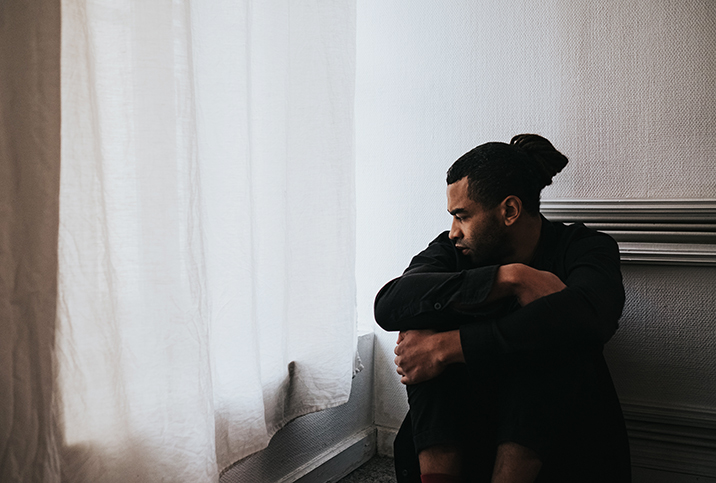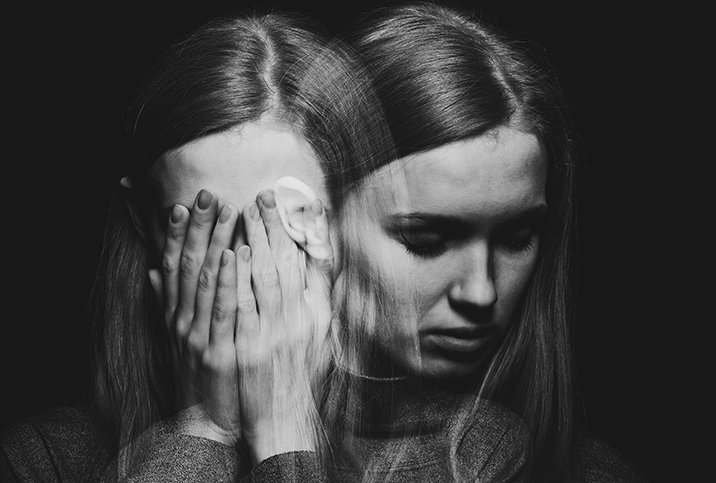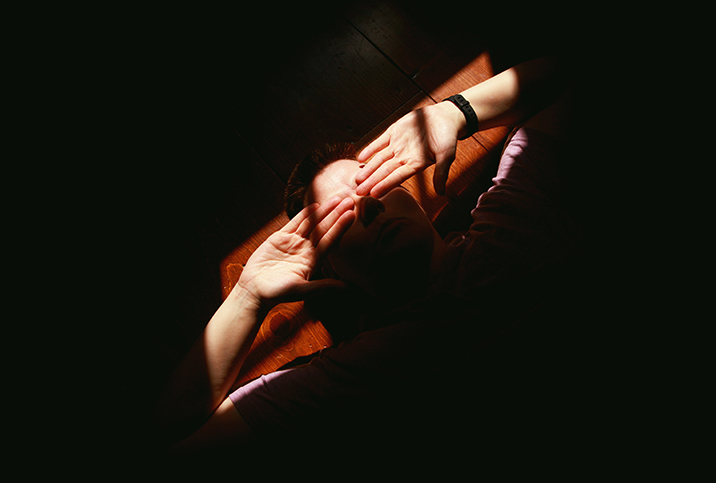Agoraphobia and How It Relates to Panic Disorder

Agoraphobia is an anxiety disorder that causes a person to have an intense fear of leaving their home, being in open or crowded places, or feeling "trapped." Sometimes this causes the person to avoid leaving their home altogether or to avoid certain situations for long periods of time. Approximately 1.3 percent of American adults will experience agoraphobia in their lifetime.
Symptoms
Agoraphobia tends to be characterized by experiencing symptoms of a panic attack when in situations such as being alone outside of the home, in crowded places or in other situations that would make "escape" difficult. Symptoms of a panic attack include rapid heartbeat, upset stomach, feeling like you're losing control, tightness in the chest, feeling "shaky," lightheadedness or dizziness, excessive sweating and trouble breathing.
Often agoraphobia is triggered by the fear of being unable to escape, which brings on a panic attack, leading to the person afflicted to want to avoid situations or places for fear of having another panic attack. This can eventually lead to the avoidance of all unfamiliar places and/or situations completely. In some cases, a person with agoraphobia may seek comfort in a specific person and will only leave their home with that person. In severe cases, a person may refuse to leave their house entirely.
Causes
While it's not clear exactly what causes agoraphobia, it is often associated with an existing panic disorder (an anxiety disorder characterized by sudden attacks of panic or fear, often without an obvious reason). Roughly a third of people with a panic disorder develop agoraphobia, according to the Cleveland Clinic.
Attempts to cope with a panic disorder can sometimes lead to agoraphobia. For example, a person has a panic attack at the mall, so they avoid the mall. Then they have a panic attack at the market, so they avoid the market. Before they know it, they're avoiding leaving the house at all to keep from having another panic attack.
Agoraphobia not associated with panic disorder can be genetic or can be caused by an underlying fear of things such as terrorism, illnesses or accidents or by a traumatic event such as a death.
In 2020 and 2021, the coronavirus pandemic has led to what the American Psychological Association (APA) is referring to as a "national mental health crisis that could yield serious health and social consequences for years to come." Americans were already experiencing high levels of anxiety before the pandemic—factors such as stay-at-home orders have put many people at an even higher risk for developing an anxiety or panic disorder, which could evolve into agoraphobia.
Treatment
There isn't any proven way to prevent agoraphobia, but the earlier treatment begins, the better the outcome. Treatment typically involves a mixture of therapy (usually cognitive behavioral therapy), lifestyle changes and sometimes medication. Success can depend upon how early a person gets help and whether they have adequate support from family or friends.
Anyone being treated for anxiety and panic disorders should also talk to their therapist about warning signs of agoraphobia, given the relationship among the disorders.
Early treatment and vigilantly adhering to a treatment regimen are both imperative. A 2007 study found recovery can be difficult to maintain with agoraphobia. Recovery rates were only somewhere between 18 and 64 percent in persons with panic disorder and agoraphobia.
Left untreated, agoraphobia often gets worse and can lead to other problems, such as substance use disorder, depression and other mental health issues.
Living with agoraphobia
"It was pure, unadulterated hell," famous cooking show host and author Paula Deen has said about her agoraphobia, which lasted for 20 years. "It took me years and years and years to say this out loud because I was so embarrassed."
Without the help she needed, Deen retreated into her own world—her home, family and cooking. Finally, with the recognition of her condition, Deen was able to slowly move back into the world outside.
Few agoraphobia sufferers—about a third—fully overcome agoraphobia to live without symptoms. Others can learn to manage the symptoms by going to therapy, practicing the recommended techniques, taking prescribed medications and being honest with themselves and their therapist about their progress.
With more than 40 million American adults experiencing anxiety disorders, there are ample resources and support groups—almost all available online, from the comfort of your home. No one has to suffer alone. If you or a loved one needs help, talk to your doctor or therapist, or contact the Anxiety and Depression Association of America.


















